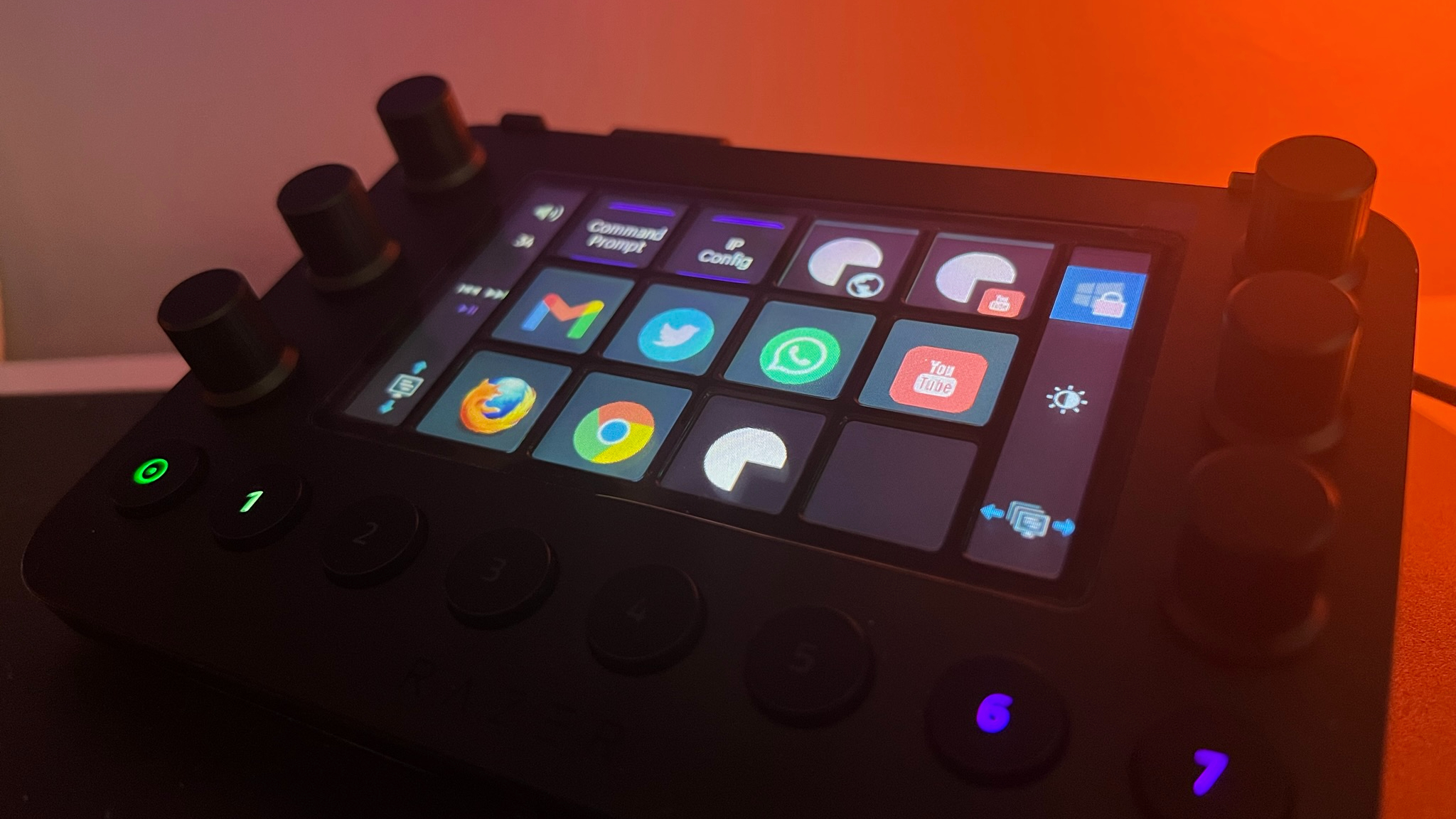GamesRadar+ Verdict
The Razer Stream Controller is certainly a useful tool that can earn its place in a setup, but it is not the ultimate package for streamers.
Pros
- +
Wide variety of input options
- +
Extensive customisation
- +
Strong build quality
Cons
- -
Touchscreen buttons require attention
- -
Stand is flimsy
Why you can trust GamesRadar+
Razer has been rapidly expanding its streaming for gamers products this year and now offers pretty much everything you need to game and stream at the same time.
For its latest addition, it has partnered with Loupedeck to take on Elgato with its new Stream Deck competitor, the Razer Stream Controller. A macro pad with a few bonus bells and whistles.
At first glance, there’s a lot to like about it, but a $269/£269 price tag makes this a less affordable option than the Elgato Stream Deck. In the end, do the extra features warrant the extra investment?
Design & features
Those who’ve been doing their research will find the Stream Controller a very familiar-looking device. Razer’s partnership with Loupedeck runs more than just skin deep: the Stream Controller is not much more than a rebadged version of Loupedeck’s 2020 release, the Loupedeck Live.
That means you’ll find the same collection of input options across the front, and it’s a pretty comprehensive offering. Six stepped dials that also click in as buttons, eight physical buttons, and 12 mini touchscreens offer plenty of flexibility.
The Razer Stream Controller offers the impressive build quality you’d expect for something bearing the Razer logo. It’s pretty understated by its standards too, an all matte black slab with just a subtle gloss Razer nameplate. The metal faceplate is premium, but it’s a little plasticky around the back for my liking - particularly when you’re paying top dollar.
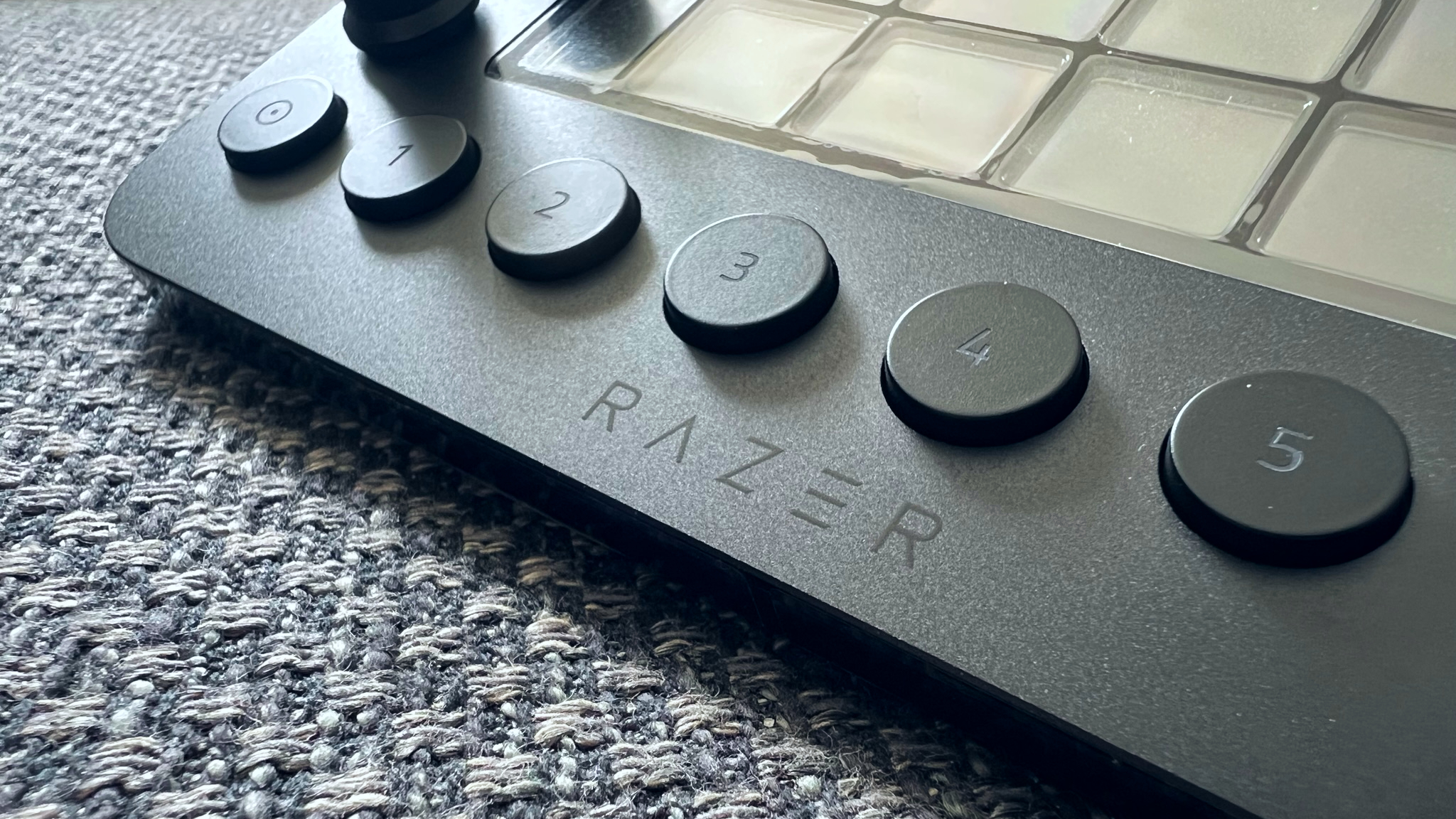
The touchscreens are bright and clear and while they’re almost exactly the same size as the buttons on Elgato’s Stream Deck they do seem slightly higher resolution. There’s no physical push to them though, instead, the whole unit has a gentle vibration to let you know you’ve fired off an action. The rumble is weak however and depending on your desk setup you might not even notice it at all. During my testing while I could hear the haptic motor fire off, I didn’t actually feel a vibration unless I held my finger on a button - which then stops the action triggering as a result; it’s not a great system.
A rather flimsy stand offers one angle of elevation or you can lay it flat on its four rubberised feet. It’s a pretty rudimentary system, but it works. There is one other physical difference between the Razer Stream Controller and the Loupedeck Live and it’s a small albeit welcome one. Razer has been far more generous with the included USB cable, which is twice the length of the one included with the Loupedeck and much less restricting when it comes to desk layout.
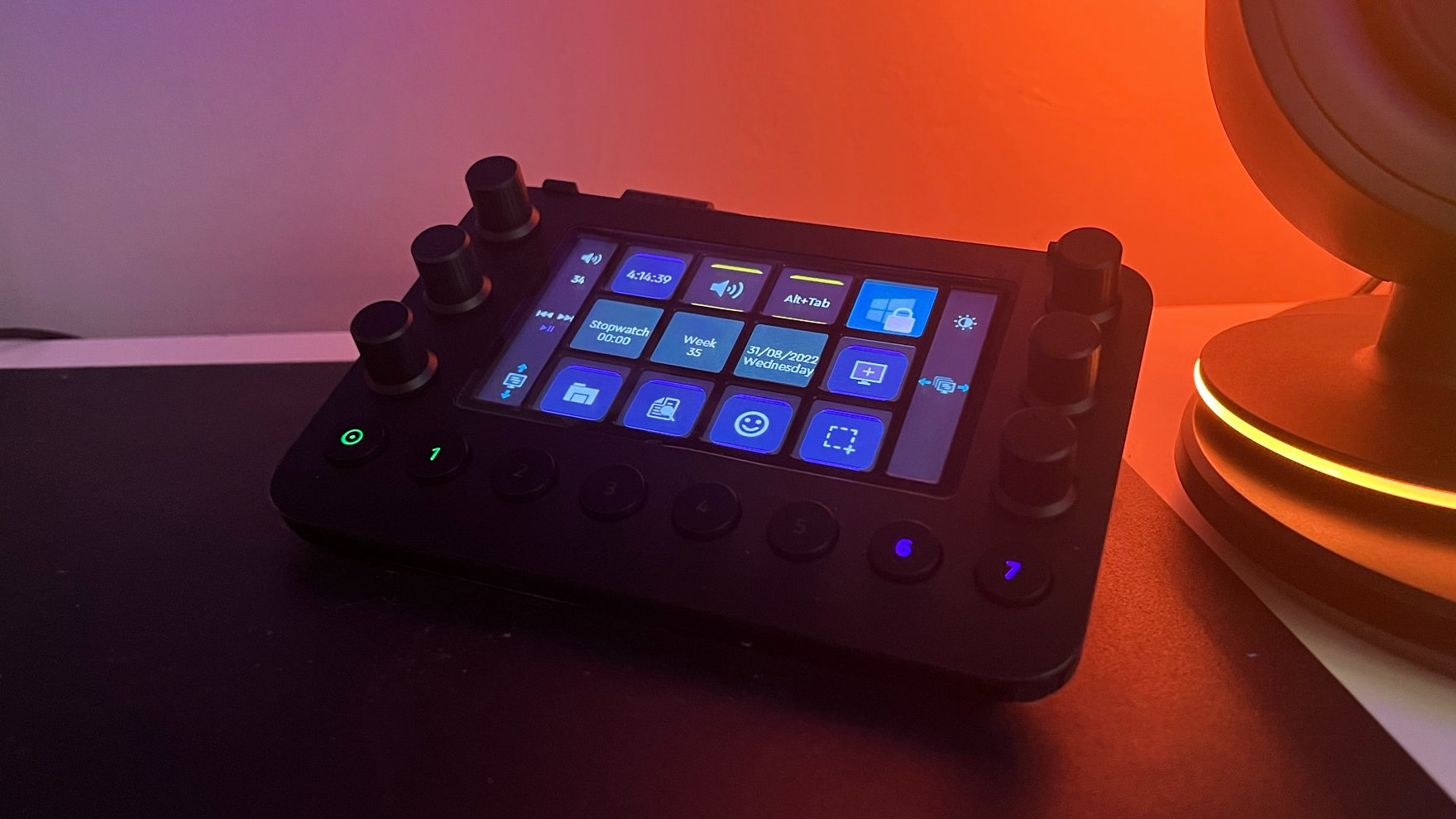
Performance
Adding the Razer Stream Controller to my Twitch stream setup was a slightly peculiar experience. I’ve been using an Elgato Stream Deck consistently for years but found the transition to the Razer controller a tricky one to make.
Both devices are designed to do the same thing, give the streamer easy access to a range of commands ready to be fired off at a moment’s notice. The problem with the Razer Stream Controller though, is that it requires too much focus to make sure you’re triggering the right thing. You can use the Stream Deck blind, I know my main game scene is the top left button, and my microphone mute button is second from the right on the bottom row. With my eyes closed, I can find these targets with my fingers and trigger them with confidence.
However, because the Razer Stream Controller’s buttons aren’t actually buttons there’s no margin for error. Unlike a physical button, there’s no chance to feel your way to the right button without taking your eyes off the game to look for it. This made the Stream Controller almost more of a hindrance than a help while live.
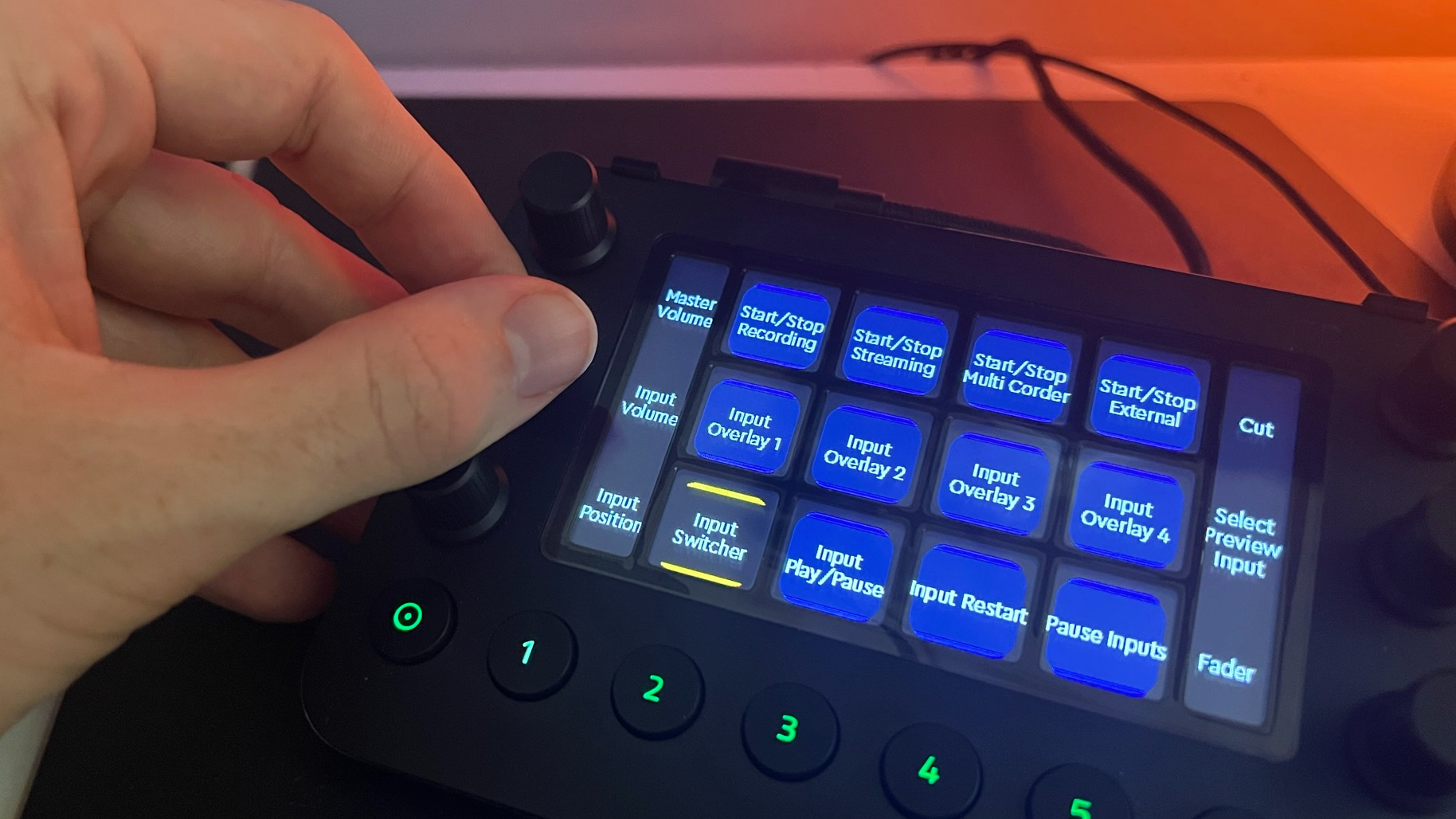
That frustration aside, there’s not much else to complain about when it comes to using the Razer Stream Controller. Actions are responsive and the benefit of constant physical buttons to switch between different pages of actions is a welcome addition over the Stream Deck’s software-only folder solution.
The dials bring granular control that isn’t available with other macro pads, changing audio levels this way feels far more natural but I didn’t find too many other uses for them while streaming. Off stream though, the dials are a handy addition to a creative workflow so editors and designers should find them useful.
The Razer Stream Controller is powered by Loupedeck’s software which offers a drag-and-drop interface for setting everything up. While it’s certainly busier than Elgato’s app it’s simple enough to use and even comes with a decent selection of preconfigured workspaces. There’s native support for the Adobe Suite out of the box too, including a whole host of default workspaces for each app, something that’s notably absent from Elgato’s ecosystem.
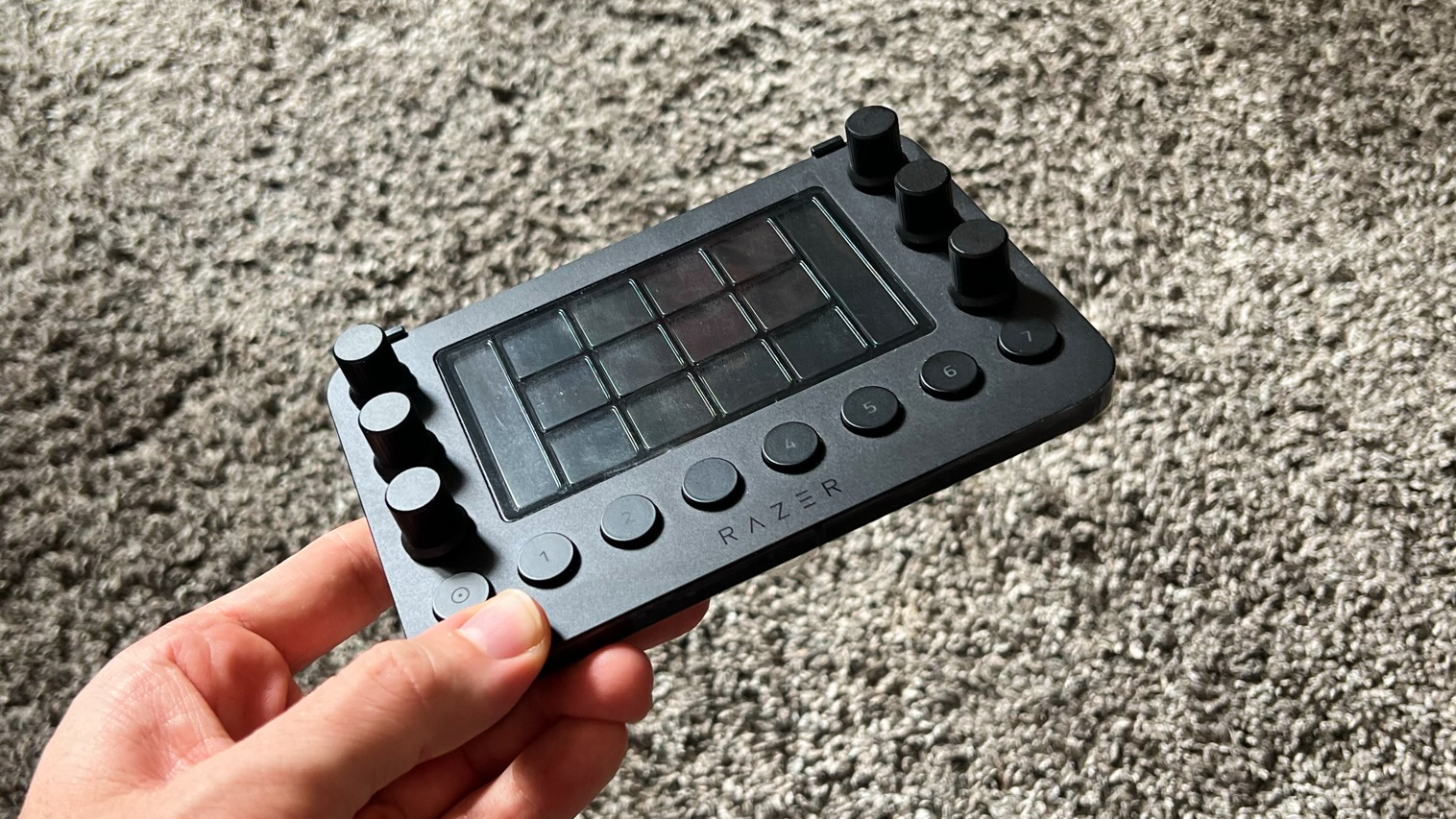
Overall - Should you buy the Razer Stream Controller?
Fundamentally the Razer Stream Controller is a solid performer and decent addition to the Razer streaming gear lineup, but unfortunately, there are a few fundamental design choices that hold it back from being much more than that. Build quality and decent supporting software are both there, but a clunky user experience holds it back from being a true Stream Deck competitor.
If needing to take your eyes off the action isn’t an issue, or you’re a particularly heavy Adobe Suite user the Razer Stream Controller will be a welcome addition to your setup. Though up against the established Elgato Stream Deck it’s just not ticking enough boxes to be worth investing the extra in.
How we tested the Razer Stream Controller
The Razer Stream Controller replaced my usual Elgato Stream Deck in my live stream setup for about a week. I carried across my most used actions like scene switching, audio control, and soundbites and replicated them in Loupedeck’s software where possible. I also used the default shortcuts for Adobe Photoshop and Premiere Pro while editing images and cutting together video.
You can read more about our approach to gaming tech and products in the full GamesRadar+ Hardware Policy.
Complete your streaming setup with one of the best microphones for streaming, best capture cards, and the best webcams.
Alex is a streamer who has been creating gaming content for over a decade, streaming on Twitch regularly across the last five years. With a degree in film and a background in sports media, you'll find him jumping between 60,000 seat stadiums and his Animal Crossing island (where he's growing pears, in case you were wondering).
